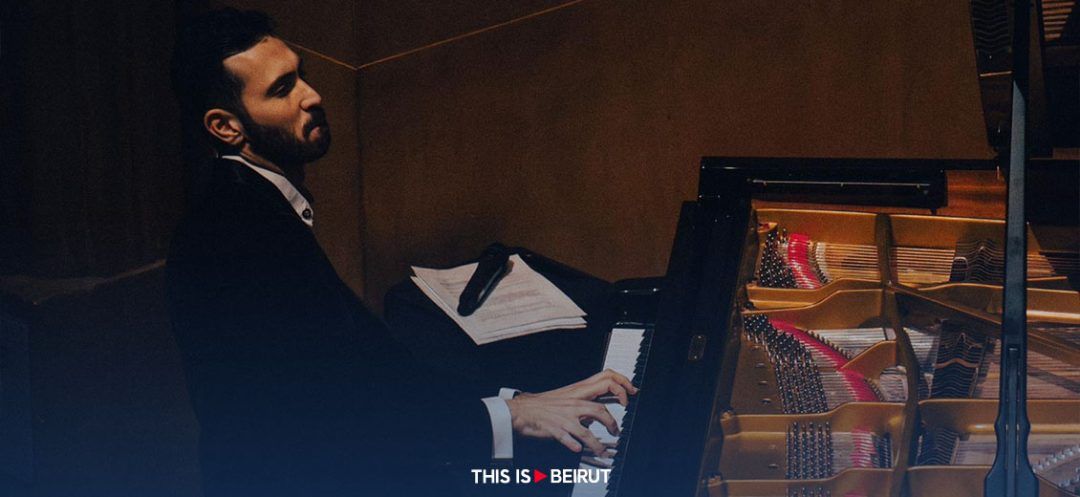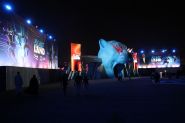
Omar Rahbany, a scion of the illustrious Rahbani lineage—Ghadi Rahbani’s son and Mansour Rahbani’s grandson—weaves a tapestry of sound that transcends the boundaries of geography and genre. A modern-day maestro, Omar Rahbany's artistry invites us into a world where music becomes the universal language of connection, discovery and expression. This March, Omar Rahbany was in concert in Paris and Geneva.
Born into a symphony of classical legacies and contemporary echoes, Omar Rahbany's compositions embody a confluence of Middle Eastern harmonies, the spirited rhythms of jazz and the impassioned embrace of tango. His musical journey is a profound dialogue with the essence of cultural heritage and innovation.
If you were to choose another form of art to express yourself, what would it be?
From an early age, I engaged in photography, story-writing and filmmaking with my brother, using my younger brother and cousin as actors. Directing has always been my passion. This passion for directing has significantly influenced my approach to music, offering a narrative structure and visual context that enhances the musical experience. My work in directing tango music videos, documentaries and short films, coupled with an appreciation for stage choreography, reflects a multidimensional artistic perspective. I was influenced by classical choreography, notably Maurice Béjart’s and Jiří Kylián’s. Although not proficient in painting and sculpting, I hold a deep appreciation for these forms as well.
Having grown up in recording studios and amid show preparations, could you explain your gravitation towards music?
My gravitation towards music is deeply ingrained, stemming from a familial legacy of musical talent and a personal passion. The background was ready for me as a child to delve into the musical world. Then, as the years went by, I started believing that people could have it in their DNA. Also, people's efforts and personality would play a big role in paving their way. My brother for example chose directing. I personally chose music as my world and what I love to do. My father also pushed me subtly. I recently saw a picture of my mother while she was pregnant, learning the piano with the person who would later become my teacher: Hagop Arslanian. I realized that my dad wanted her to learn the piano while she was expecting.
[gallery link="none" size="full" ids="236386,236387,236388"]
As a member of the third generation of the Rahbani family, your music is a blend of Middle Eastern influences as well as jazz and tango. What inspires you?
My personal journey with music began at a very young age, during which I was predominantly exposed to a broad spectrum of music from classical to Baroque, and modern eras. Furthermore, my environment was enriched by the presence of Mansour and Ghadi Rahbani's theatrical work, which introduced me to Eastern music, specifically to the Rahbani’s genre. This experience marked my initial encounter with Middle Eastern musical styles. At the age of 13, my father offered me an album by the Brazilian composer Antônio Carlos Jobim, which was my introduction to the genre of Brazilian jazz. During this period, I also developed an interest in the tangos, further diversifying my musical influences, as my dad used to listen to Astor Piazzolla. This interest was supported by my mother's profession as a tango dancer. Later on, I embarked on a self-directed journey to explore new musical genres, including Indian music and its diverse forms, such as Konnakol. This exploration also extended to Eastern music as a whole, including Lebanese and Egyptian styles.
What particular contributions did you make to the rendition of Bint El Shalabiya?
Bint El Shalabiya is a folk song to which the Rahbani brothers added a couplet. My contribution involved incorporating an additional final section that echoes the phrase Bint El Shalabiya, culminating in a climax at the piece's end. I employed the Karatchi rhythm, a beat prevalent in North Africa, including Egypt and the Maghreb region, to infuse this piece with a distinctive rhythmic character. The orchestration was divided into several sections: the string section provided the melodic foundation, the Eastern instruments section added cultural authenticity, and the brass section was utilized in the style of a Jazz big band.
What about your international career and future projects?
My international music career started with a debut at London's Royal Court Theater, followed by performances at Carnegie Hall and in Bahrain, Kuwait, Paris and Geneva. In these concerts I aimed to share my musical narrative with a global audience, reinforcing connections with the Lebanese diaspora and emphasizing the cultural and political significance of Lebanese heritage worldwide.
Looking ahead, my future projects include a tour with a focus on Lebanese influences, a classical composition and a multidisciplinary project blending theater, cinema and music. In collaboration with my brother Kareem, our Rahbani 3.0 venture is set to explore various cinematic projects, reflecting our dynamic and innovative approach to art and culture.
Instagram: @mariechristine.tayah
Born into a symphony of classical legacies and contemporary echoes, Omar Rahbany's compositions embody a confluence of Middle Eastern harmonies, the spirited rhythms of jazz and the impassioned embrace of tango. His musical journey is a profound dialogue with the essence of cultural heritage and innovation.
If you were to choose another form of art to express yourself, what would it be?
From an early age, I engaged in photography, story-writing and filmmaking with my brother, using my younger brother and cousin as actors. Directing has always been my passion. This passion for directing has significantly influenced my approach to music, offering a narrative structure and visual context that enhances the musical experience. My work in directing tango music videos, documentaries and short films, coupled with an appreciation for stage choreography, reflects a multidimensional artistic perspective. I was influenced by classical choreography, notably Maurice Béjart’s and Jiří Kylián’s. Although not proficient in painting and sculpting, I hold a deep appreciation for these forms as well.
Having grown up in recording studios and amid show preparations, could you explain your gravitation towards music?
My gravitation towards music is deeply ingrained, stemming from a familial legacy of musical talent and a personal passion. The background was ready for me as a child to delve into the musical world. Then, as the years went by, I started believing that people could have it in their DNA. Also, people's efforts and personality would play a big role in paving their way. My brother for example chose directing. I personally chose music as my world and what I love to do. My father also pushed me subtly. I recently saw a picture of my mother while she was pregnant, learning the piano with the person who would later become my teacher: Hagop Arslanian. I realized that my dad wanted her to learn the piano while she was expecting.
[gallery link="none" size="full" ids="236386,236387,236388"]
As a member of the third generation of the Rahbani family, your music is a blend of Middle Eastern influences as well as jazz and tango. What inspires you?
My personal journey with music began at a very young age, during which I was predominantly exposed to a broad spectrum of music from classical to Baroque, and modern eras. Furthermore, my environment was enriched by the presence of Mansour and Ghadi Rahbani's theatrical work, which introduced me to Eastern music, specifically to the Rahbani’s genre. This experience marked my initial encounter with Middle Eastern musical styles. At the age of 13, my father offered me an album by the Brazilian composer Antônio Carlos Jobim, which was my introduction to the genre of Brazilian jazz. During this period, I also developed an interest in the tangos, further diversifying my musical influences, as my dad used to listen to Astor Piazzolla. This interest was supported by my mother's profession as a tango dancer. Later on, I embarked on a self-directed journey to explore new musical genres, including Indian music and its diverse forms, such as Konnakol. This exploration also extended to Eastern music as a whole, including Lebanese and Egyptian styles.
What particular contributions did you make to the rendition of Bint El Shalabiya?
Bint El Shalabiya is a folk song to which the Rahbani brothers added a couplet. My contribution involved incorporating an additional final section that echoes the phrase Bint El Shalabiya, culminating in a climax at the piece's end. I employed the Karatchi rhythm, a beat prevalent in North Africa, including Egypt and the Maghreb region, to infuse this piece with a distinctive rhythmic character. The orchestration was divided into several sections: the string section provided the melodic foundation, the Eastern instruments section added cultural authenticity, and the brass section was utilized in the style of a Jazz big band.
What about your international career and future projects?
My international music career started with a debut at London's Royal Court Theater, followed by performances at Carnegie Hall and in Bahrain, Kuwait, Paris and Geneva. In these concerts I aimed to share my musical narrative with a global audience, reinforcing connections with the Lebanese diaspora and emphasizing the cultural and political significance of Lebanese heritage worldwide.
Looking ahead, my future projects include a tour with a focus on Lebanese influences, a classical composition and a multidisciplinary project blending theater, cinema and music. In collaboration with my brother Kareem, our Rahbani 3.0 venture is set to explore various cinematic projects, reflecting our dynamic and innovative approach to art and culture.
Instagram: @mariechristine.tayah
Read more




Comments